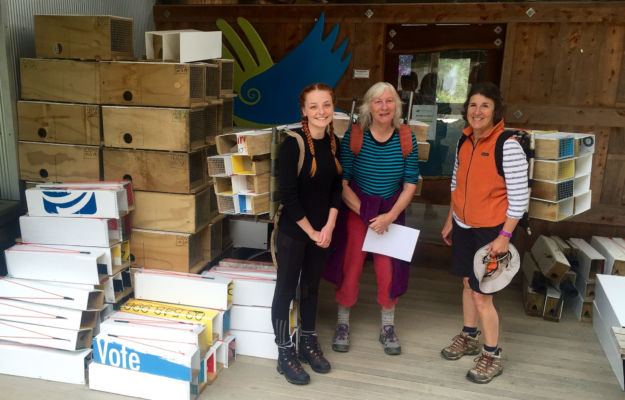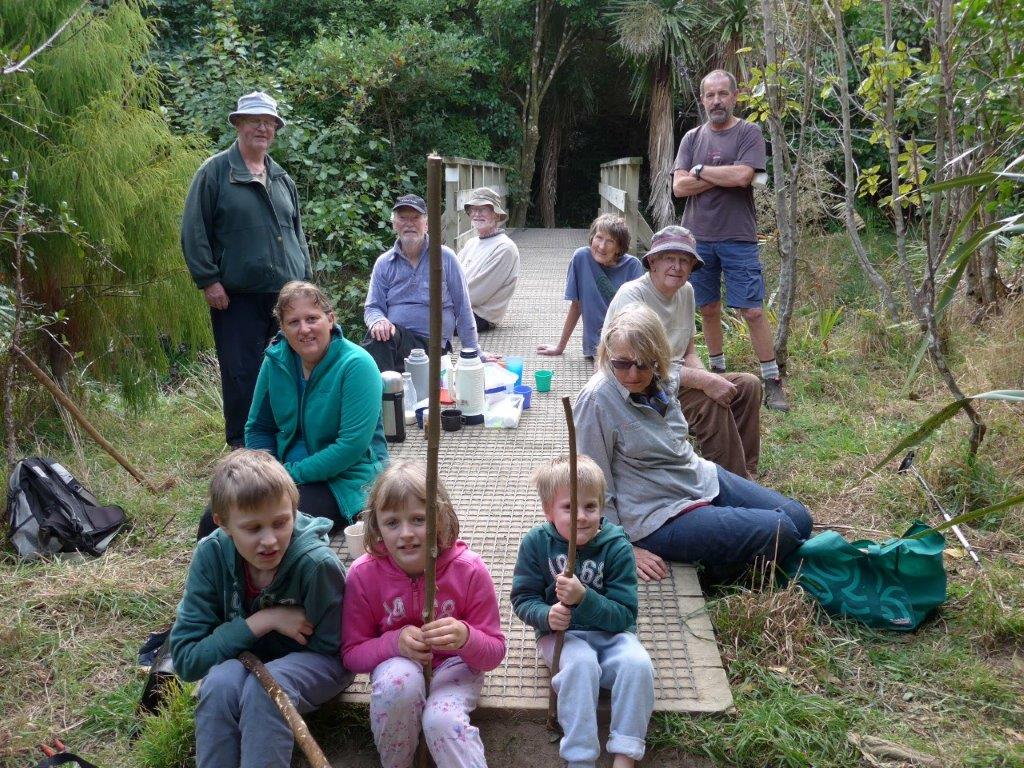It has been estimated that between 25,000 and 45,000 people belong to community-based environmental groups in New Zealand. That’s a lot of volunteer work and, as the estimate was made in 2011, numbers since then are likely to have grown.
There’s also a pretty wide range of uncertainty in those estimated numbers – 25,000 to 45,000 – reflecting perhaps, how little we actually know about the full extent of volunteer environmental work being done.

The volunteer contribution is huge – and is increasingly being relied on by resource management agencies facing biodiversity declines and funding limitations. So who are the volunteers? What are their group characteristics and what kind of environmental projects are they engaged in?
In 2015, University of Waikato researchers Monica Peters, David Hamilton and Chris Eames conducted an online survey of community environmental groups in an effort to find out more about their makeup, motivations and achievements. The researchers analysed responses from 296 community groups – out of the estimated 600 or more groups thought to be carrying out volunteer conservation work across New Zealand.
“Responses were spread across all mainland regions of New Zealand (with Stewart Island included in Southland). Seven groups with projects spread over more than one region were also included. The greatest numbers of no-responses were for the Waikato and Auckland regions.”
Most of the groups that responded were small – with no more than 20 members – and had been in existence for more than 6 years. Members tended to be in the older age range.
“When asked what age most group participants were, over half (53.7%) were reportedly in the 51–65 year age bracket, with those in the 31–50 year age bracket (25.7%) being nearly double that of the post-retirement age bracket, i.e. 65 years or over (12.5%).

Forests (64.0%), streams (42.0%) and wetlands (33.2%) formed the three most commonly restored ecosystems reported by community groups. Other ecosystems (1.4%) restored included a limestone bluff, shingle pit, subalpine karst cave and lowland dryland. Over two-thirds (67.9%) of groups’ projects took place on Crown land (DOC and other), and just over one-quarter on privately owned land (27.9%). Over one third of projects restoring lakes (40.6%), freshwater wetlands (37.2%), coastal areas (36.8%), streams (36.7%) and forests (35.0%) took place on land in private ownership (including Māori-owned land).”
Not surprisingly, weed and pest animal control were key activities of the groups.
“Weed control and planting of natives were reportedly undertaken by most groups (86.1% and 85.4% respectively). Three-quarters of groups carried out pest animal control (75.3%), with slightly fewer (70.8%) engaged in advocacy and educational activities. Over one-half of groups (56.9%) reported writing submissions to government agencies on environmental matters.”
It was good to note that the importance of monitoring results was also recognised by a number of groups, but ideally more could be done in this area.
“Nearly one-half of groups (48.6%, n = 282) carried out their own environmental monitoring while an additional 3.5% of groups used a contractor for this activity. When asked about other activities, open-ended responses (n = 57) included rubbish removal (2.9%), plant propagation (1.5%), and attending Environment Court hearings (1.1%).”
Almost all community groups received support from local and/or central government agencies.
“A total of 92.9% of groups (n = 295) reported receiving some form of support from project partners. Overall, nearly one-third of the support received by community groups was reportedly provided by councils (31.3%), followed by DOC (21.2%) in line with the largest percentage of projects reportedly occurring on Crown land (43.8%) followed by DOC-administered land (24.1%).”
At the conclusion of their study, the researchers had several recommendations, including more collaborative conservation work.
“To achieve greater efficiencies in resourcing, agency partners could, for example, assist groups where practical to form networks. In addition, access to larger funds for restoration and related works (e.g. environmental education) would encourage greater collaboration between groups and lessen competition for limited resources… Ongoing financial and practical support is needed to ensure that community groups remain sufficiently resourced to carry out their mostly voluntary contribution to biodiversity restoration, protection and enhancement.”
The role of ‘citizen science’ and potential contribution by community groups is also discussed by the authors.
“With citizen science entering the national vocabulary and wider opportunities for community involvement in scientific research evolving, there is a need for better understanding of how groups measure restoration success. An in-depth understanding of community groups and their projects will assist with improving support delivery by project partners, and in developing an inclusive and cohesive sector based on meaningful partnerships. Ultimately, a strategic approach to supporting community groups will enhance groups’ environmental outcomes at the local level while also contributing to national goals for biodiversity conservation.”
The full article is published in the New Zealand Journal of Ecology and is freely available.
Action on the ground: A review of community environmental groups’ restoration objectives, activities and partnerships in New Zealand (2015)

